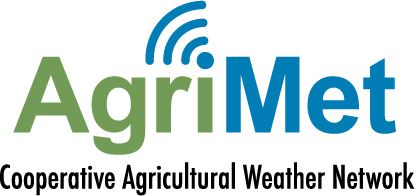- Reclamation
- Columbia-Pacific Northwest Region
- AgriMet
- General Information

About AgriMet Crop Water Use Charts
AgriMet uses site specific weather data to estimate evapotranspiration (ET, or crop water use) for crops grown in the vicinity of each weather station. Historically AgriMet only used the 1982 Kimberly-Penman ET model developed by the USDA Agricultural Research Service in Kimberly, Idaho to compute daily reference ET (ETr)at each station. In 2013, AgriMet began providing the ASCE standard Penman-Monteith model as well for both alfalfa (ETrs) and grass reference (ETos). Historic data is available for all years and sites with both methods, however crop charts use the Kimberly-Penman method for all years prior to 2015, years 2015 and after use the Penman-Monteith model. AgriMet plans to offer crop data using the Penman-Monteith model in the very near future. If you have immediate needs for data using the Penman-Montieth model, please Contact the program coordinator. More information is available about AgriMet's implementation of the Kimberly-Penman Model. AgriMet uses alfalfa as the reference crop, and reference ET is computed from daily (not hourly) weather data. More information on the Penman-Montieth modelCrop coefficients are used to compute crop specific ET based on the alfalfa reference ET. These crop coefficients vary throughout the growing season based on the plant growth stage. The crop coefficients are tied to the actual plant growth stage by three dates: Start, Cover, and Terminate dates. Start dates are the beginning of vegetative growth in the spring for perennial crops or the emergence date for row crops. Cover dates are typically when plants reach full foliage. Terminate dates are defined by harvest, frost, or dormancy. See Definitions of Crop Dates for crop specific start, cover, and terminate dates used in the AgriMet program. For more information about crop coefficients, see About AgriMet Crop Coefficients .
Following is an explanation of the columns displayed in an AgriMet crop water use chart:
- Crop: Abbreviated identifier for the crop being modeled. See Key for an explanation of crop codes.
- Start Date: Typically the crop emergence date or beginning of vegetative growth for perennials.
(Note: 999 is used as a place holder date early in the growing season) - Daily ET: The previous 4 days of crop specific ET
- Daily Forecast: Average of the last 3 days ET
- Cover Date: Typically when the plant reaches full foliage.
- Term Date: Terminate date (frost, harvest, dormancy, etc.)
- Sum ET: Total crop water use to date by crop, since the start date.
- 7 Day Use: Total crop water use for the last 7 days.
- 14 Day Use: Total crop water use for the last 14 days.
AgriMet crop water use charts are updated each morning at approximately 5:30 am Mountain Time, and reflect ET based on the weather conditions for the previous day. There is also a tabular ET Summary Table showing daily crop water use for each crop for the entire growing season. These are available for both current and previous years. A table of Evapotranspiration Totals and Averages provides yearly totals and long term averages of crop specific ET. A table of Month Average Reference Evapotranspiration provides period of record monthly ETr values for each weather station.
In addition to the reference ET (ETr) and crop consumptive use information (ETc) provided by the 1982 Kimberly Penman equation, AgriMet also produces ETrs and ETos information using the ASCE-EWRI Standardized ET Equation . ETrs is evapotranspiration from a tall, rough reference surface (like alfalfa), and ETos is evpotranspiration from a short, smooth crop (like clipped grass). The purpose of the standardized reference ET equation is to bring commonality to the calculation of reference ET for agricultural and landscape use. Currently AgriMet only displays ETrs and ETos as calculated by the standardized equation; crop consumptive use information continues to be computed using the 1982 Kimberly Penman equation. ETos and ETrs information can be obtained from the Historical Archive Data Access link on the Weather Data page. Currently, implementation of the ASCE-EWRI equation in AgriMet is on a daily (not hourly) time step.

